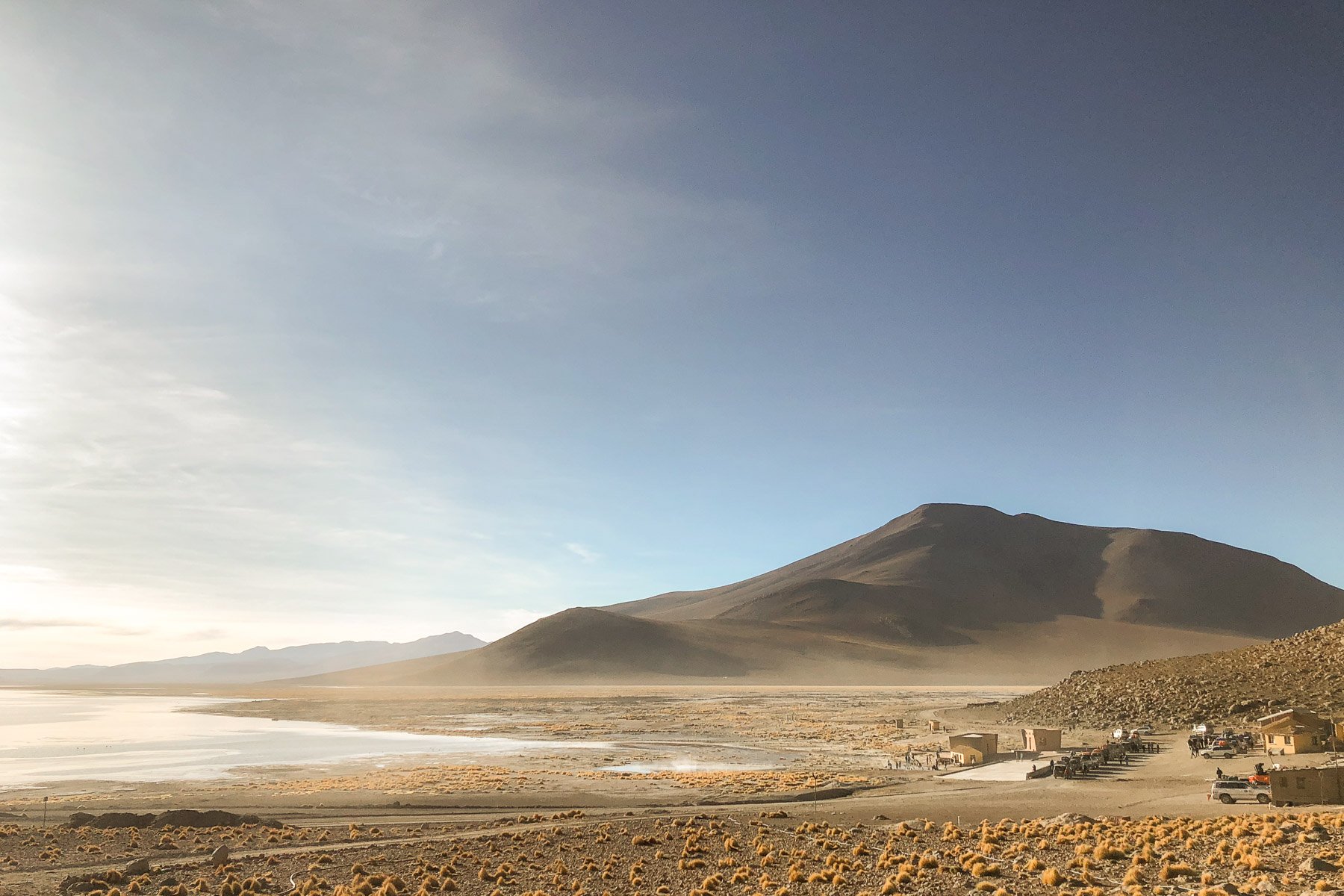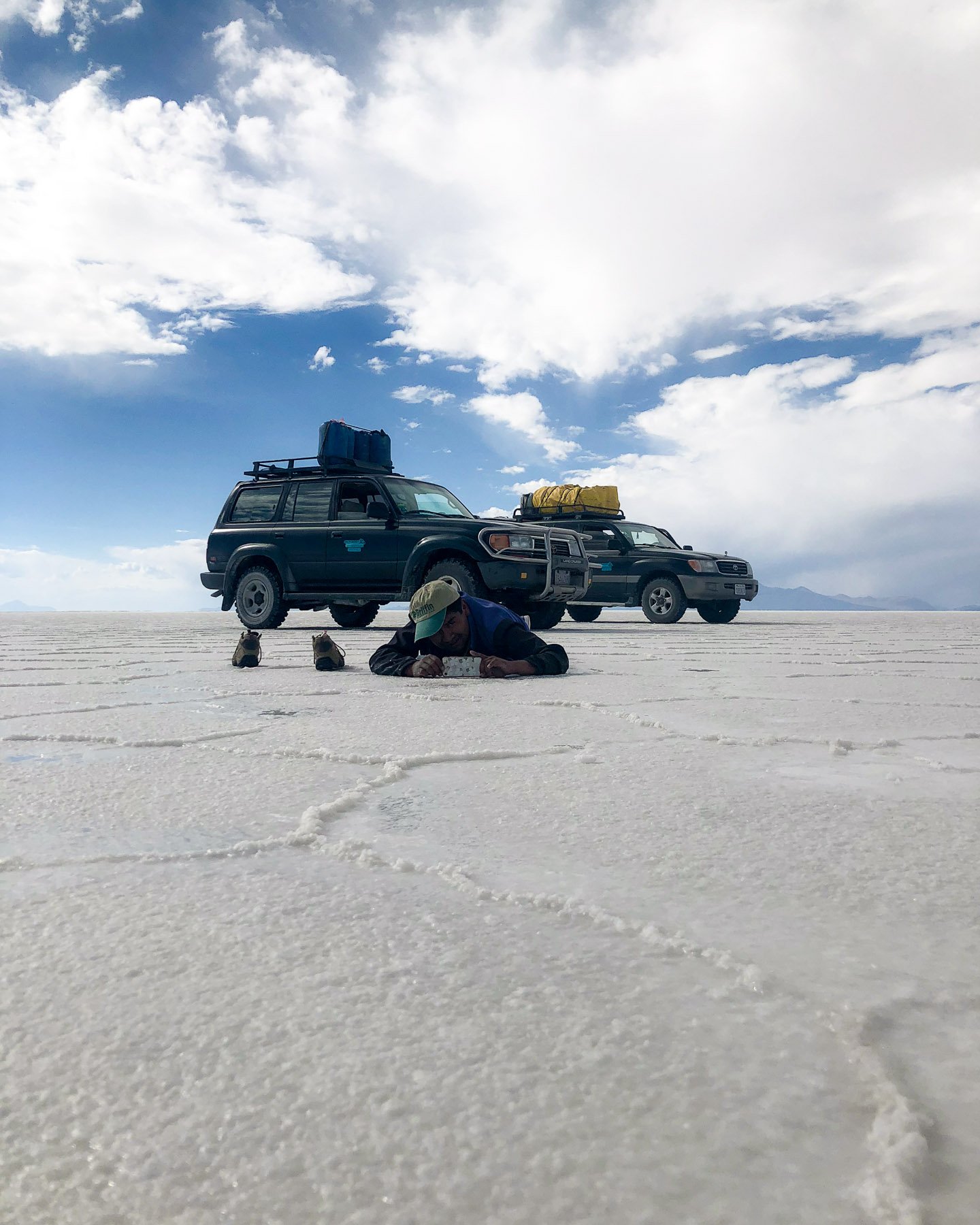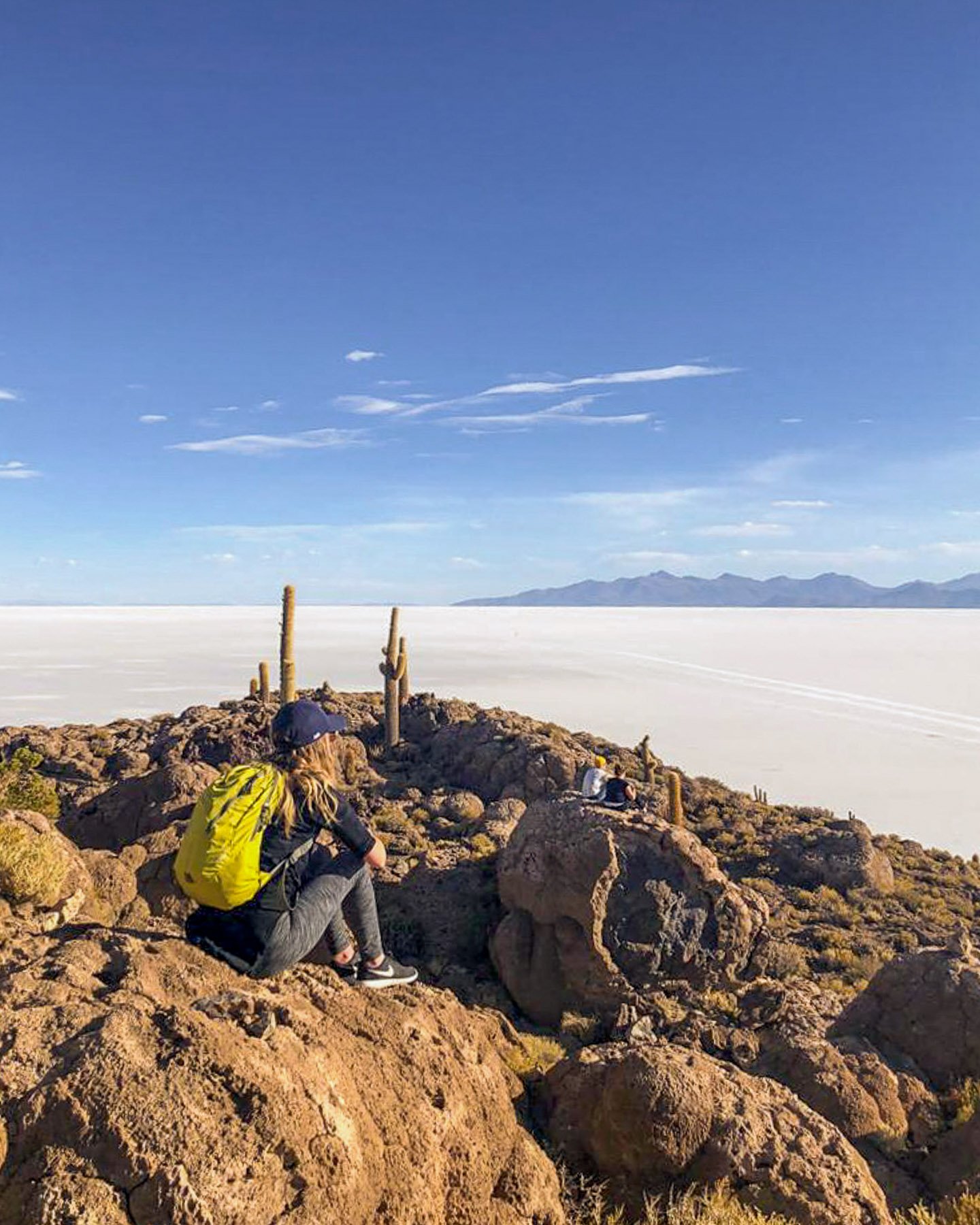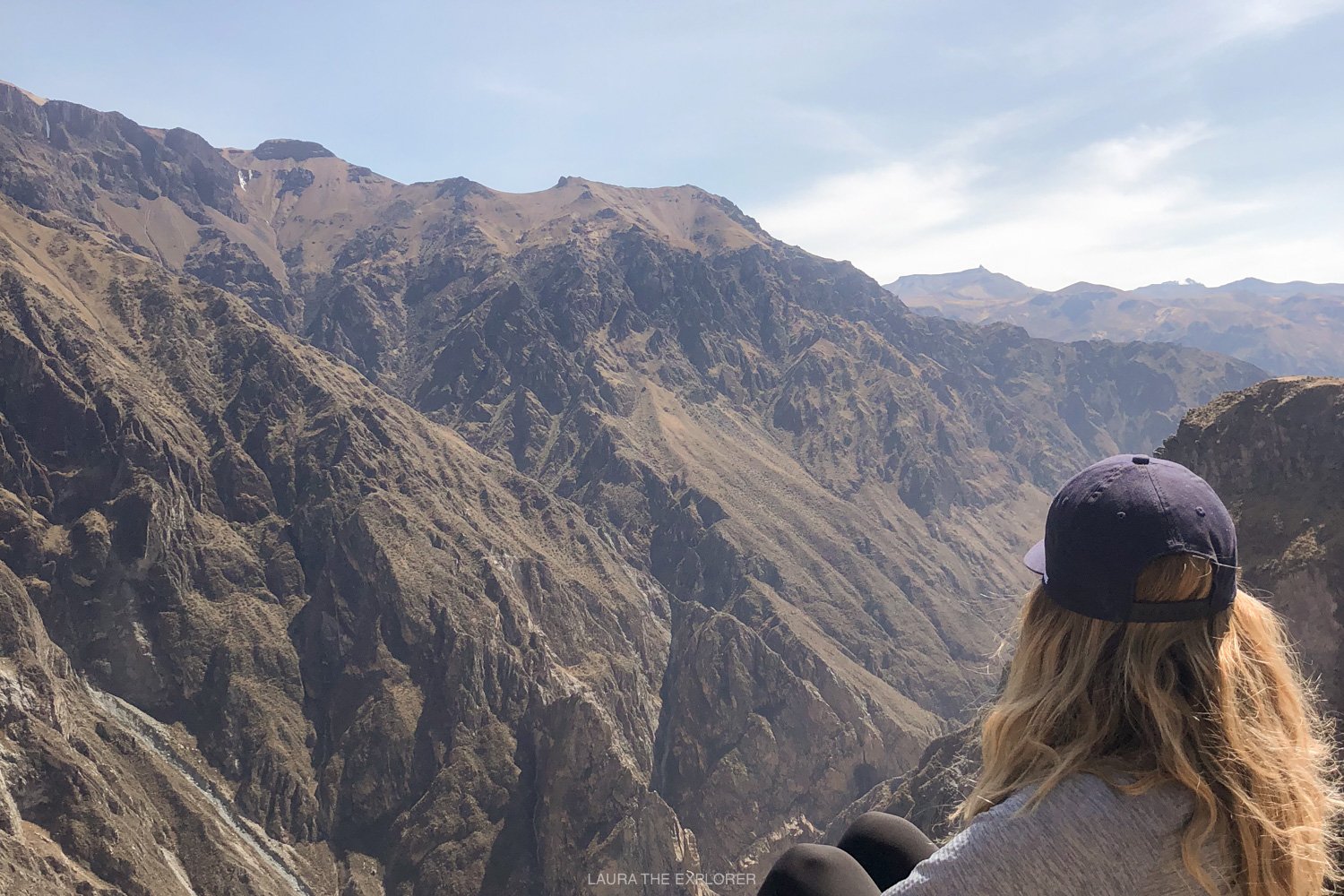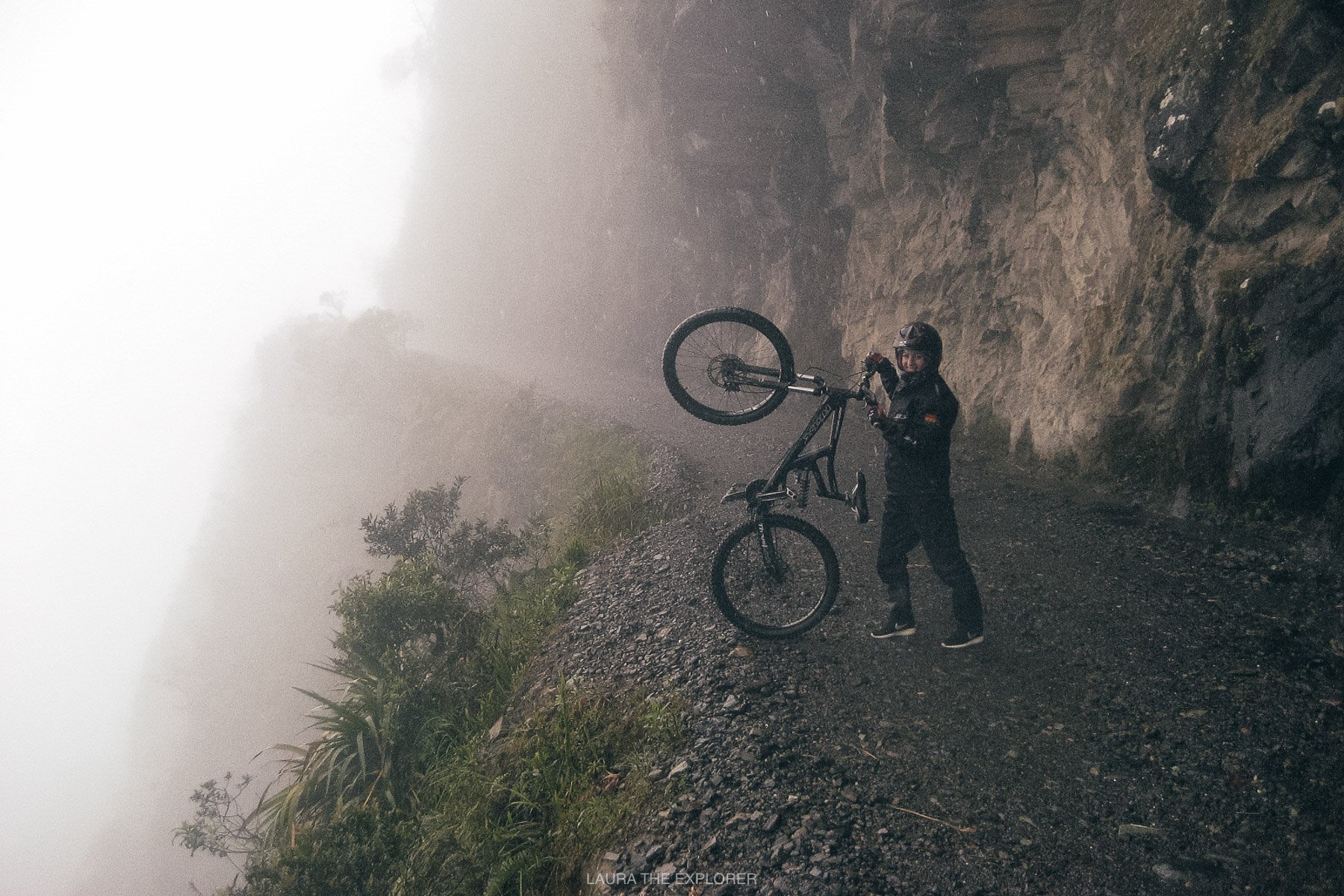A Guide to: Salar de Uyuni 3 Day Tour
The Salar de Uyuni might be the most mesmerising and fascinating landscape you ever visit.
A tour through this southern Bolivian terrain will make you rethink what nature is meant to look like - from the glittering white Salar de Uyuni salt flats, multi-coloured lakes that use just about every colour on the palette and trees made from stone - this is one place that blow all your expectations out of the water. Even the altiplano deserts are so surreal that one is named after the great surrealist Salvador Dali.
The Salar de Uyuni is most famous for being the largest salt flat in the world, spanning over 10,000sq.km (3,900 sq.mi) at an altitude of 3,656m. Originally a series of prehistoric lakes that evaporated over time, the salt crust is now so large and flat that NASA uses the flats to calibrate their satellite altimeters. It also becomes the world’s largest mirror after it rains and a thin layer of water sits on top of the salt.
But the Salar de Uyuni isn’t the only reason to take a tour, the Altiplano region of Bolivia features a range of salt flats and deserts along with salt and fresh water lakes pocketed between the mountains, volcanos and other geothermal activity of the Andean Plateau. The Altiplano is also home to a variety of pink flamingos and herds of llamas and vicunas.
Despite it’s remote location on the border with Chile and Argentina, a Uyuni 3 day tour is one of the most popular things to do on a visit to Bolivia. So if a visit to the salt flats is on your radar, here’s everything you need to know about getting to Uyuni, including what to expect on a tour, how to choose the best tour operator, what to pack for the tour and the best time to visit the Salar de Uyuni.
Ready to explore?
GETTING TO THE SALAR DE UYUNI
Getting to the Uyuni Salt Flats is possible by air, bus and train.
BY AIR
*Note that as of November 2021, flights are not currently operating due to Covid restrictions. Check the latest info.
Flights are available from La Paz to Uyuni twice daily on both Amaszonas and Boliviana de Aviacion airlines. Both airlines run a morning and an evening flight in and out of Uyuni.
The flights are timed to suit the salt flats tour that most flyers come to Uyuni for, with the morning flight arriving in time to start a tour and the evening flight timed for after the tours end. It’s therefore totally possible to fly in the morning of the tour if you’re pressed for time and don’t want to stay a night in Uyuni town.
Flights cost a little over $US100 return, and with little difference between the two airlines, it’s easiest just to pick whichever suits your arrival day the best.
BY BUS
There are a wider range of options for travelling to Uyuni by bus, with arrivals from La Paz, Potosi and Sucre, among others.
Direct buses from La Paz to Uyuni are overnight with a time of 9-10hrs of travel so if you’re looking to save a night’s accommodation this could be a great option. Bring your jacket and warm scarf on board as the drivers are known to crank the AC. and also bear in that bus travel in Bolivia is not up to the standards as surrounding South American countries.
BY TRAIN
Whilst not the most common method to arrive, it is possible to travel to Uyuni by train.
Routes are available from Villazon and Tupiza (both near the border with Argentina), as well as from Oruro. From Oruro, note that trains do not run every day and take a lot longer than the bus.
For more information regarding safety on transport in Bolivia, I have details in my Peru & Bolivia guide:
Read More: Peru & Bolivia: What to Expect & Itinerary
Arrive by train - just maybe not this one!
WHAT TO EXPECT ON A SALAR DE UYUNI 3 DAY TOUR
» THE SALAR DE UYUNI TOUR ROUTE
The most popular starting point for the tours is out of Uyuni, and this is the option I’ve detailed below. However ti’s also possible to start a tour from Tupiza further south in Bolivia, or from San Pedro de Atacama in Chile.
The tour starts around 10am in the town on Uyuni.
Day 1 is spent exploring the vast Uyuni Salt Flats - the largest salt flats in the world. Formed when an ancient lake dried up millions of years ago, this flat (and sometime reflective) expanse is about 10,500 sq.km (a little over 4,000sqm) - similar to the size of Big Island in Hawaii!
Day 2 is spent exploring the Eduardo Avaroa National Reserve in the altiplano deserts - think multicoloured lake, flamingos, volcanos, geysers and hot pools!
Day 3 is spent checking out the rest of the National Reserve and then either heading back to Uyuni or continuing on to San Pedro de Atacama in Chile.
» VEHICLES & DRIVERS
All tours of the salt flats are in 4WD vehicles. These are generally all of equal quality - typically older models, but well prepared for the journey across the harsh terrains.
The 4WDs get loaded up with everything required for the trip - fuel, drinking water, food, all of your gear and any repair/emergency kit items get packed onto the roof and covered to protect them from the dust.
We found that if an English speaking driver (guide) was requested, the tour groups tended to operate in pairs - with the one English speaking driver shared between the two groups.
Whilst our driver/guide would inform us of the locations and activities that we visited, the driver is not a tour guide who will explain in depth each and every sight, and they will not join you in exploring each location.
On arrival at each place, you will be free to explore on your own and at your own pace. The driver/guide will give you an indication of when you need to be back at the vehicle, and times were usually very generous!
Rush hour on the Salar de Uyuni
» ACCOMMODATION IN THE SALAR DE UYUNI
It’s best to check your expectations for accommodation on the salt flats. Choosing a luxury option will be the difference between getting a private room versus sharing dorm style. Facilities are pretty basic but hey - it’s in one of the most remote and least populated regions in the world where natural resources are precious. What the accommodation may lack in luxury, it makes up for in uniqueness and it’s unbelievably beautiful location!
NIGHT 1
Most tours stay in a salt hotel to the south of the salt flat on the first night. All the walls, floor and even furniture in our hotel made from blocks of salt!
Here’s what to expect:
FOOD - our dinner was generous with lots of options, though I’m not sure if specific dietary requirements were catered for.
HEATING - there’s no heating in the salt hotels, but plenty of blankets are provided. It get’s pretty cold when the sun goes down!
HOT WATER - a hot water shower is available for an extra charge. To reduce the strain on water sources, consider the tour a bit like camping and maybe forgo the hot shower.
PLUGS - as the walls are made from salt, running power cables is a little difficult. There was one central charging zone in the dining area of the hotel, but you may have to wait for a space.
SHARED BATHROOMS - we had a twin room to share, however the bathrooms were shared for all guests (separate male and female spaces).
WIFI - was more or less non existent. I don’t think I ever got it my iphone to connect, let along a strong enough signal to communicate to the outside. Consider a salt flats adventure off-grid!
NIGHT 2
Tour groups either stayed at the hostel or refugio in Huayllajara, right next to Laguna Colorada, or at at Hotel Ecologico de Piedra, right next to the Polques Hot Springs on the edge of Salar de Chalviri.
Here’s what to expect at Hotel Ecologico de Piedra:
FOOD - our dinner and breakfast here was really generous and tasty.
HEATING - again, no heating but it was much more insulated that the salt hotel.
HOT WATER - a hot water shower is available for an extra charge.
PLUGS - there was one central charging zone in the dining area of the hotel, but again you may have to wait for a space.
BATHROOMS - we had a twin room to share, with an adjoining bathroom (but no shower).
WIFI - again, the wifi was more or less non existent.
HOT POOLS - thanks to it’s location, we were free to come and go from the hot pools at any time.
Have you ever wanted to visited a salt hotel?
» FOOD ON THE SALAR DE UYUNI TOUR
Meals provided typically provided on the tour are as follows. All the food was delicious and plentiful - it’s unlikely you’ll go hungry.
LUNCHES - served on all three days of the tour. This is typically a picnic and was served in locations such as the former Salt Hotel located in the middle of the flats (the hotel was the original salt hotel in the middle of the flats, however closed down some time ago due to environmental concerns), on the edge of a stunning colourful lake which was full of flamingos, and then in an area surrounded by crazy rock formation.
DINNERS - served on days one and two of the tour. Our dinners was served at the accommodations, and all of the food was shared buffet style with our group. It was a great opportunity to catch up with the group and chat about the events of the day.
BREAKFASTS - served on days two and three, typically after an early morning wake up call! We received a range of hot and cold options.
WATER - Fresh, filtered water was carried in the vehicle and available throughout the trip. At each meal, tea and coffee were also available.
» COSTS FOR THE SALAR DE UYUNI
A tour of the Salar de Uyuni is pretty affordable, and it will generally be cheaper to book a tour on your arrival in Uyuni. If you arrive at least a day in Uyuni before wanting to start the tour, it will totally be possible to shop around for the best option.
However for those with a fixed itinerary it makes sense to book in advance - especially if you arrive into Uyuni the morning of the tour as it will be impossible to shop around at the point.
Expect to pay the following for the base tour:
SPANISH SPEAKING - the price point is around 800-950 Bob per person for a 3-day tour (US$110).
ENGLISH SPEAKING - the price point is around 1200-1500 Bob per person (US$220).
The tour will include all transport, accommodation, driver/guide, food as described above and oxygen in case of altitude problems.
Payment is made in the tour operator offices - and be aware that payment is required in cash - either Bob or USD.
There are some additional costs that should be factored in, as these are typically not included by any tour operator. Bring local cash for these:
Entry to Incahuasi Island - 30 Bob per person (US$5)
Entry to the Eduaro Avaroa National Reserve - 150 Bob per person (US$25)
Entry to the Polques Hot Springs - 5 Bob per person (<US$1)
Additional snacks or souvenirs.
If you’d like to end the tour in San Pedro de Atacama instead of returning to Uyuni, there will be an additional fee of 50 Bob per person ($US10).
Tours starting from San Pedro de Atacama rather than Uyuni are also typically more expensive than those starting from Uyuni.
There’s many ways to view the Salar de Uyuni
CHOOSING A SALAR DE UYUNI TOUR COMPANY
With endless options for tour providers on the salt flats all doing pretty much the same route, with similar food, at similar accommodations, in similar vehicles, offering similar ratios of guides/drivers to travellers, and all tours coming in around the same price…. how do you choose the right tour?!
After being recommended a tour operator by a friend and having a great experience, we have an insight into the subtle differences between the tours that can make for a better trip.
» TOURS THAT START SLIGHTLY EARLIER OR LATER
With all the tour groups departing Uyuni at the same time, the salt flats can look a little like a tourist train with the 4WDs arriving on-masse at each attraction. As our tour left a little later than others (though I’m still not sure if this was in fact intentional or not!), it was always a busy when we arrived, but then it would clear out and we’d get to enjoy the spot when it was lot emptier.
Advice: Find a tour with a start time that’s a little different to the rest - either earlier or later! It won’t have too much impact at the end of the day.
» TOURS THAT WILL WATCH THE SUNSET OVER THE SALAR
As our tour started slightly later, the sun was setting by the time we were making our way off of the Uyuni salt flat. Our driver pulled up (with no other vehicles in sight!) so we could enjoy the incredible sunset over the salty terrain - it was so beautiful!
Some drivers may stop by default to watch the sunset, whilst some may stop on request - and we’ve heard of some refusing to stop due to timings.
Advice: Find a tour that will stop to watch the sunset over the salt flat.
» BETTER ACCOMMODATION ON NIGHT 2
The two options for accommodation on the second night mean a slightly different breakdown in the activities for Days 2 and 3.
Our tour stayed at Salar de Chalviri (see the cover picture of this post!) and it was definitely better than the other options. Due to it’s location, we visited the Sol de Manana geyser in the late afternoon of Day 2 and were the only group there!
The hotel was located right next to the hot springs, meaning we could come and go whenever we liked! We spent the evening in the warm waters, watching as the sun set and the stars came out - as there’s no light pollution here it was an incredible experience.
It was also possible to pop back to the hot pools again early in the morning before the other tours arrived as part of their Day 3 activities.
Alternatively, the tours staying at Laguna Colorada had very basic, shared dorm accommodation (one tour group per room). These tours ended the day at the lagoon, then visited the Sol de Manana geyser and hot springs very early on the third morning. Whilst splitting up the activities between days a little more - we hear the hot springs visit is very rushed and busy with so many tours visiting in the morning.
Advice: Find a tour that stays next to the hot pools - whilst it does mean packing more activities into Day 2, it results an epic sunset from the hot pools.
We toured with Salty Desert Adventours and would recommend them to others for a tour of the salt flats.
Sunset on the Salar de Uyuni
WHAT TO PACK FOR THE SALAR DE UYUNI TOUR
As you’ll be doing a lot of adventuring, and a lot of driving, on the salt flats tour, it’s best to stick to warm layers that can be added to or removed as you switch between exploring and bumping along in the 4WD.
These items are also essential for a tour of the Salar de Uyuni:
Battery packs to recharge camera gear - both charging time and space will be limited at the accommodations.
Wind breaker and warm jacket - whilst helpful during the days, these are essential at night.
Shoes that you don’t mind getting salty - as you might have guessed, the salt flats are really salty. This will clean off easily later, but you’ll might have salty shoes for a couple of days.
Sunscreen, sunglasses and a hat - the glare off the white salty ground is no joke! Slap on the factor 50 to all exposed areas - we learned our lesson after coming away with bright red ankles!
A towel - for the hot springs, or if you decide to splurge on a shower. Otherwise, bring compostable wet wipes.
Cash - for the entrance fees.
Snacks - for between meals
Beanie, gloves and scarf - for the evenings.
Swimsuit - for a dip in the hot pools.
Sleeping bag - the accommodations are not heated so a warm sleeping bag is neccesary.
Toilet paper - the salt flats tour passes through really remote areas where toilets may be of dubious quality - have some TP on hand.
Advice: As it’s really difficult to access your main luggage throughout the day, carry a small pack with you inside the truck with all the essentials and valuables (camera gear, snacks, water, sunscreen etc).
The Bolivian altiplano contains many salt flats and lakes.
DAY-BY-DAY SALAR DE UYUNI ITINERARY
» DAY 1
At the tour company’s offices you’ll meet the rest of your group (unless you’re already a group of 6), before heading out to the first stop of the day, the nearby Train Cemetery.
From here, you’ll head to Colchani Village to learn the salt mining process before heading straight out onto the Salar de Uyuni (Uyuni Salt Flats).
Pulling up in the middle of the salt flats with no one else in sight, it’s time to take all the fun pictures, before heading on to the old Museo de Sal (Salt Museum and Hotel). It was closed down for environmental reasons, but it’s great to use the salt furniture for a picnic. The Banderas del Mundo (Flags of the World) monument is also located here.
After lunch, climb up Incahuasi Island, which is full of very old cacti, before heading across the salt flats to find a spot to watch the sunset over the horizon.
» DAY 2
Head out early again to see an active volcano at the Mirador Volcan Ollague before visiting several altiplano lakes, full of flamingos and the most amazing range of colours.
After a picnic lunch by a lake, you’ll see the Stone Tree located in the Siloli desert dunes before admiring the mesmerising Laguna Colorada (Coloured Lake) in the Eduardo Avaroa Andean Fauna National Reserve. The red water mixed with the white borax is an incredible sight.
Then head across to Sol de Manana, an active geyser field of steam and mud, and on to the night’s accommodation, Hotel Ecologico de Piedra. Located on the edge of Salar de Chalviri, the hotel is a stone’s throw away from the hot springs. It’s the perfect place to relax in the hot water as the sun sets over the salt flat.
» DAY 3
Another day on the salt flats means another early start. First up is the surreal Salvador Dali Desert before heading on to the Licancabur Volcano and the green lagoon.
If you’re returning back to Uyuni is rather a rather long drive, however the fascinating landscape does a great job of keeping you entertained. Stop for a lunch in a rocky outcrop where you might spot one of the locals - vizcachas (chinchillas) - who live in the area.
After arriving back in Uyuni, before heading to the airport there’s time for an early dinner and look around the town before the tour guide will drop you to the airport for the evening flight back to La Paz.
Having fun on the Salar de Uyuni
FAQ ABOUT A 3-DAY TOUR OF THE SALAR DE UYUNI
» Will I be able to purchase any supplies or souvenirs on the Salar de Uyuni tour?
Once you leave Colchani on the edge of the salt flats, opportunities to purchase anything else will be extremely limited!
There are no shops or stores across the salt flats and opportunities will be limited to sparse, remote villages beyond the flats.
On the second day, there was a small store selling snacks at the volcano viewpoint, and on the third day we passed a few more little villages.
It’s best to assume nothing will be available to come prepared with any snacks and supplies you many want!
» Does the Salar de Uyuni tour reach high altitudes?
Yes - the salt flat tour reaches altitudes of up to 4970m at the Polques Hot Springs!
The town of Uyuni sits at 3663m altitude and from here, all the altitude gains in the tour will be gradual. If you’re flying in from La Paz, you will already be well acclimatised.
The best thing to do for the altitude is not to exert yourself too much too soon, avoid alcohol and stay hydrated. As our trip also involved hiking in Peru, we carried the medication Diamox which can be used to avoid Acute Mountain Sickness, though we found we did not really need it. Check with your travel doctor on this one!
Those arriving from San Pedro de Atacama will be acclimated to 2407m and may need to factor the additional altitudes that are reached more quickly from the Chilean border.
Reputable companies will carry oxygen, so check this will be provided.
» What is the weather in the Salar de Uyuni?
During the summer, weather in the Uyuni Salt Flats will be mild with rain. In the winter it will be cold and dry. Bear in mind that the salt flats will often have really cool winds blowing through the desert, and it will be cold at night no matter the time of year, so bring plenty of layers to adjust to the conditions.
We visited in October and experienced mild temperatures and sunny skies, but with strong cold winds on all days of the tour.
The altiplano lakes full of pink flamingos
» When is the best time to visit the Salar de Uyuni?
The best time to visit the salt flats depends on whether you want to see the amazing mirror-like reflections on the salt flats or not!
The mirror effect occurs during the rainy season between December and April.
Outside of the rainy from May until November, the salt crust forms an incredible crystallised pattern.
» Is a tour of the Salar de Uyuni worth it?
Absolutely - a tour of the Uyuni salt flats will take you through some of the most incredible, unique and surreal landscapes you may have ever experienced. The tour includes so much more than just the salt flats - so many of the unexpected places we visited really blew my mind and were like nowhere else I have been.
» Where to stay in Uyuni?
As we flew in and out of Uyuni to suit the tour, we didn’t end up staying a night in the town of Uyuni, however there are a range of accommodation options.
Prices are a little more expensive than other areas of Bolivia such as La Paz, but expect to get a comfortable room for around US$50/night.
If you want to splash out, the Hotel Palacio de Sal is the most luxurious place to stay and is built out of salt blocks.
» Where to go next after a salt flats tour?
The most common destinations after a tour of the salt flats are La Paz or San Pedro de Atacama, though there are other options too, like a bus to Potosi or the Bolivian administrative captial Sucre, or Villazon on the border with Argentina.
La Paz and San Pedro de Atacama are the most popular destinations though.
ONWARDS TO LA PAZ
Flight to La Paz leave twice per day to Uyuni - once in the morning and once in the evening. Therefore it’s totally possible to finish a 3-day salt flats tour then head out to La Paz later that evening.
ONWARDS TO SAN PEDRO DE ATACAMA
On the third day of the salt flats tours, instead of returning to Uyuni, it’s an option to request a transfer to San Pedro de Atacama in Chile. The tour will drop you at the border, about 15 minutes drive the Licancabur Volcano and ensure you safely cross the quiet, easy border crossing. From here, a prearranged bus will be waiting to complete the one hour trip through to San Pedro de Atacama.
For more suggestions on where to go next in Peru & Bolivia, there are heaps of suggestions here:
Read More: Peru & Bolivia: What to Expect & Itinerary
Desierto de Siloli
Want to save this guide for later? Pin it!
This blog post was about:
